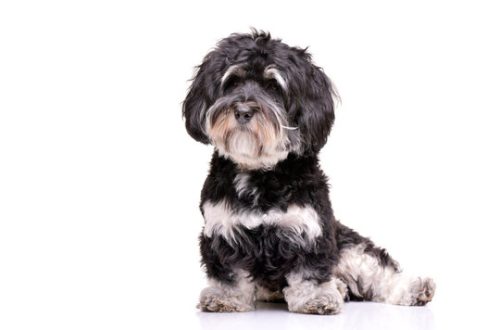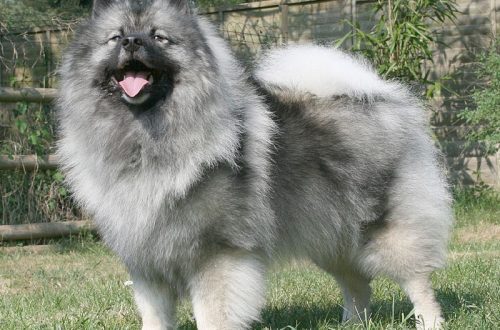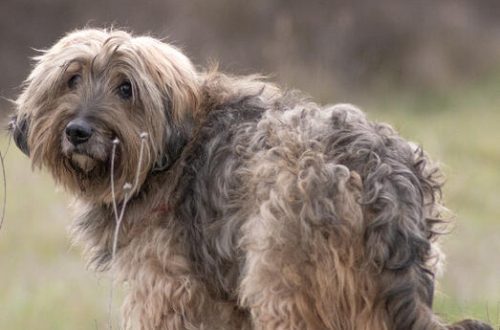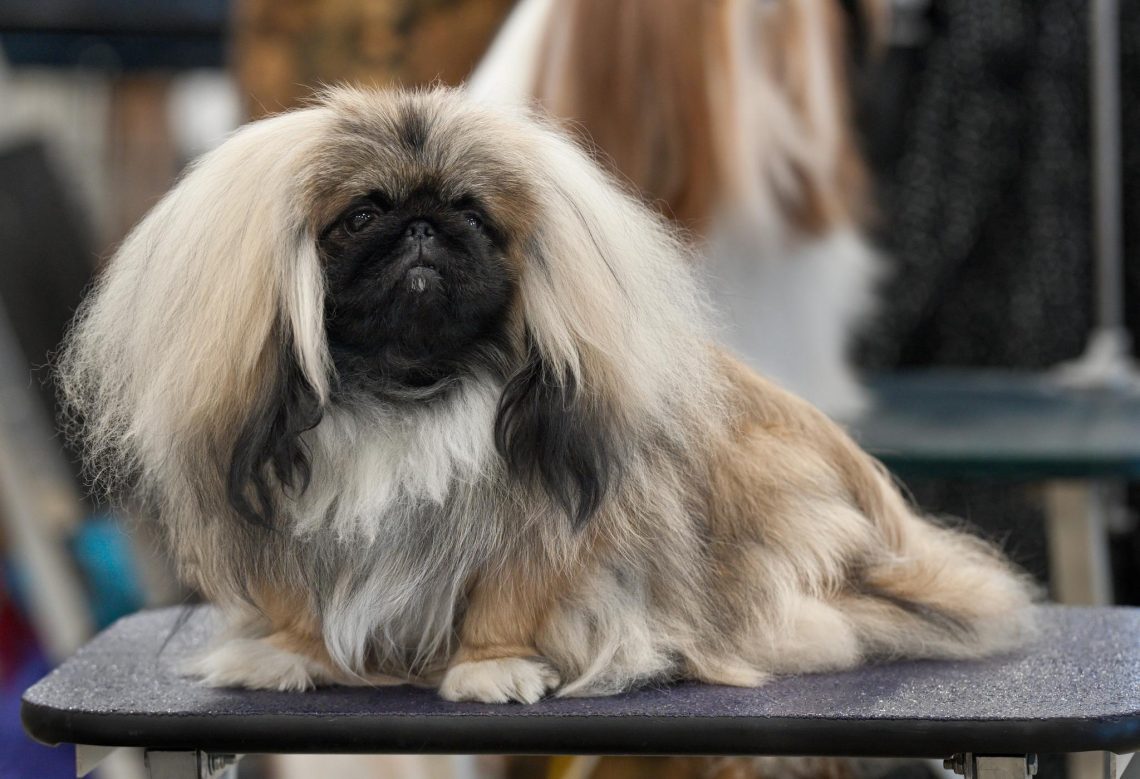
pekingese
Alia nomina: Spaniel , Canis Palatium Peking
Pekingese is an ancient breed of decorative dogs with short legs, “flattened” muzzles and fluffy hair, bred in China.
Contents
Characteres Pekingese
| Civitas originis | Sinis |
| magnitudinem | aedes |
| Augmentum | 20-24 cm in arescet |
| Pondus | ex VII ad I kg |
| Age | usque ad XVII annorum |
| FCI genus group | particeps canum |
Basic moments
- Iuxta antiquam Sinensem fabulam, Pekingese leonis et simiae posteri sunt, ex duorum animalium coniugio nati et a parentibus superba indole, cum eximia specie coniuncta.
- Like all short-faced dogs, Pekingese suffer from heat. In addition, in a dream, they can make unusual funny sounds that vaguely resemble snoring or hoarse sniffing.
- With the off-scale cuteness of their appearance, the Pekingese are independent and rather arrogant pets.
- Relate ad alia cura, canes satis quieti sunt. Pekingese infra suam dignitatem considerat res exponere et proelia titulo alpha masculino cum catto vel Guinea porco disponere.
- Paucis ante decenniis, genus a commercii foetu valde laborabat, quod effecit in integris lineis canum mobilium et ingenue aegrotorum.
- Pekingese do not tolerate too close physical contact, which makes them uncomfortable, so they can bite children who go too far with hugs.
- In terms of physical activity, the breed is somewhat passive, therefore, with a lack of free time, the Pekingese does not have to be walked daily.
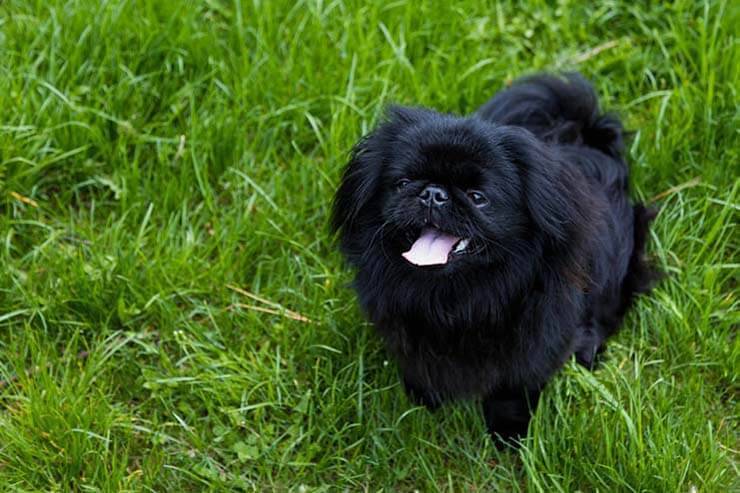
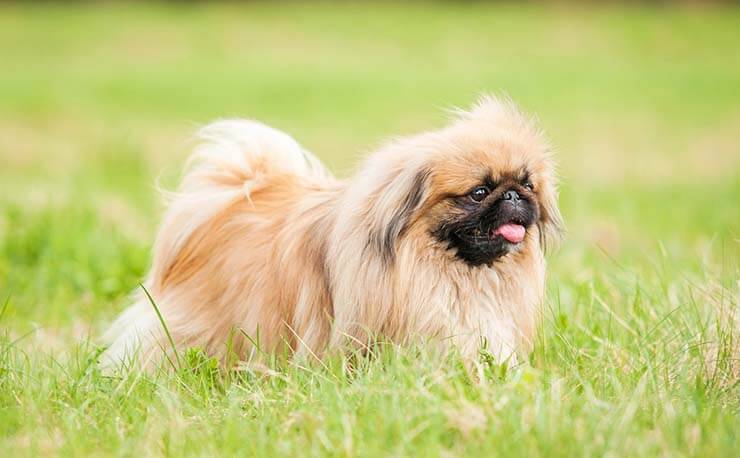
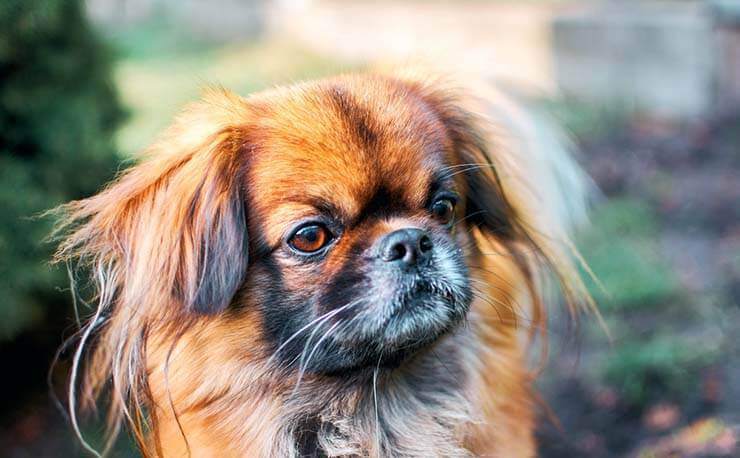
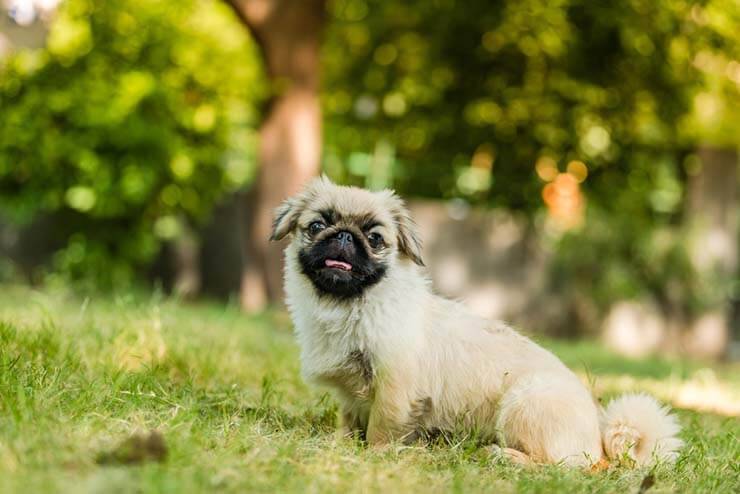
Pekingese lucida repraesentativa canini beau monde est specie praestanti ac valido independentis charactere. Superbus et modice levis, superbus iste homunculus nunquam consentit fautori, de quo statim suum dominum certiorem faciet. Eodem tempore aristocratiae sensum innatum habet. Insculpta wallpaper et supellectile, sine fine querelas de solitudine in modum latratu molestissimi, pulmentum in conclavi — haec omnia sunt ingenui mores pekingese, quas nunquam patietur.
Historia Pekingese nobilium
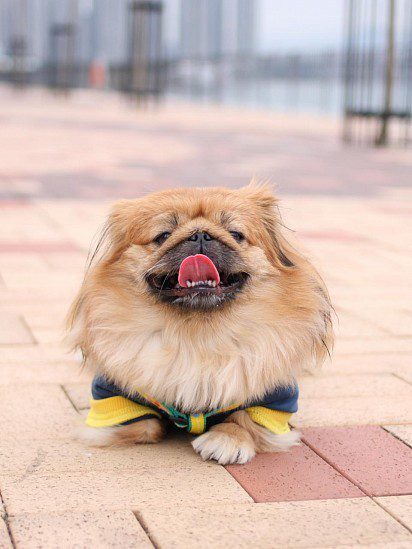
Patria Pekingensium Sinarum est. In Imperio Coelesti hae fluffies arrogantes ad cultum elevatae sunt, eas addito indice de cura gratiosa imperatoris. Secundum quosdam rumores, aetas generationis bis mille annos iam excessit, sed mundus tantum duodevicesimo saeculo non invenit. Sub Sinensium rectoribus per saecula cura, Pekingesi vel Fu canes, ut in patria sua appellari maluerunt, in reales fati satellites effecti sunt. Figurae eorum e fictili sculptae erant, fabellae circa eas fiebant, et minimae repraesentativae nobilium manicas circumvehebantur, edentes cupedias e mensa electas.
Chinese Pekingese sample of the XVIII-XIX centuries. Impossibile enim est populo ambulare per plateas civitatis, quia ius animalium generandi ad familiam imperialem pertinebat et hereditarium erat. Inde ad factum quod emendus, accepto munere, et tandem modo catulus palatii furatus paene univocus factus est. Bestiae custodiebantur a re militari, quibuscum ne latrones quidem atrocissimi auderent contendere. Aedes Europaeae, qui diu aliam curiositatem Asiaticam Pekingese spectabant, nimirum talibus restrictionibus non placebant, sed in re ipsa fatum intervenit.
In 1859-1860. inter Sinas, Angliam et Galliam, alterum bellum Opium ortum est, ex quo euentus Imperatoris Caelestis Imperij fuit expugnatio. Britanni ipsum regem cum familia sua in Palatio aestivo non invenerunt, sed in eo quinque miraculose Pekingese superstites, qui postea in Magnam Britanniam missi sunt. Ex hoc tempore, novus, Europae circumeundo, historiae de genere incipit, dans mundum canibus decorat iubis et simia leonibus facies. Viam bestiae iam Pekingese in Anglia nominaverunt, in fundamento nomen capitis Sinensium - Beijing.
Video: Pekingese
Pekingese breed standard
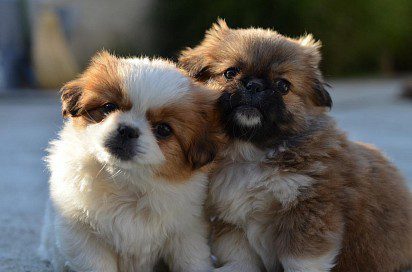

Prima Pekingese ad Britanniam anno 1860 perspecta, hominum modice similis modernorum hominum apparuit et Chins Iaponica similior videbatur, sed temporis conformatio differentiae inter rabiem clariores apparere coeperunt. Sic, exempli gratia, annis delectu et diligens delectu, Pekingesi pondus adepti sunt, eorumque crura significanter breviora facta sunt. Praecipuum notae speciei hodierni "canes leonis" est corpus compactum inculcatum. Etiam cursorio examine animalis percipitur sentiendum esse eam cum parvo torculari desuper et antrorsum deprimi. Fiscus Pekingese est exitus separatus, quia in eo canis exiguus est. Facies haec magis ridicula est creaturae mediocris ignotae ocellos tumentes ocellos et os parvum medium apertum, e quo lingua nitida et aspera extenditur.
Ad tempus, genus est duplex: manica et classica sic dicta. Manica Pekingese inferiores sunt versos in magnitudine, licet non plene "peram" cura. Pondus horum hominum maxime pendet a regione admissae. Ita, exempli gratia, in USA et Canada, omnia animalia plus quam 3 kg reiecta sunt. Et hoc non obstante quod pondus legatorum huiusmodi in genere classico 5-5.5 kg attingit. Rami Pekingese manicae non adteguntur ob notas corporis quae eas fetus plene parere non permittunt, ergo, mirum, parvae catulos a patribus mediocribus obtinentur.
caput
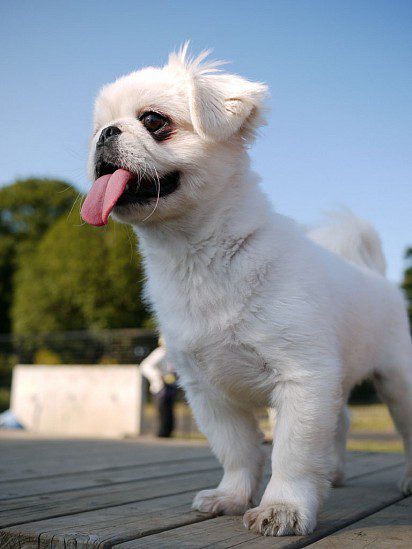

The Pekingese has a massive, strongly flattened skull between the ears with a distinct stop. The muzzle of the dog is short, stretched in breadth, bordered by a v-shaped fold, enveloping the nose bridge and ending on the cheeks.
Dentes et mordere
Small, even Pekingese teeth are hidden behind the lips and are practically invisible. As for bite, a moderate undershot bite is typical for the breed (this item is not specified in the standard).
nasus
The Pekingese has a flattened and fairly wide nose. Lobe black, brightly pigmented, with wide, well-opened nostrils.
oculi
The large round and sometimes slightly bulging eyes of the Pekingese give it a somewhat surprised look. The standard color of the iris is dark. Light-eyed individuals are regarded as plembrace and are not allowed to compete.
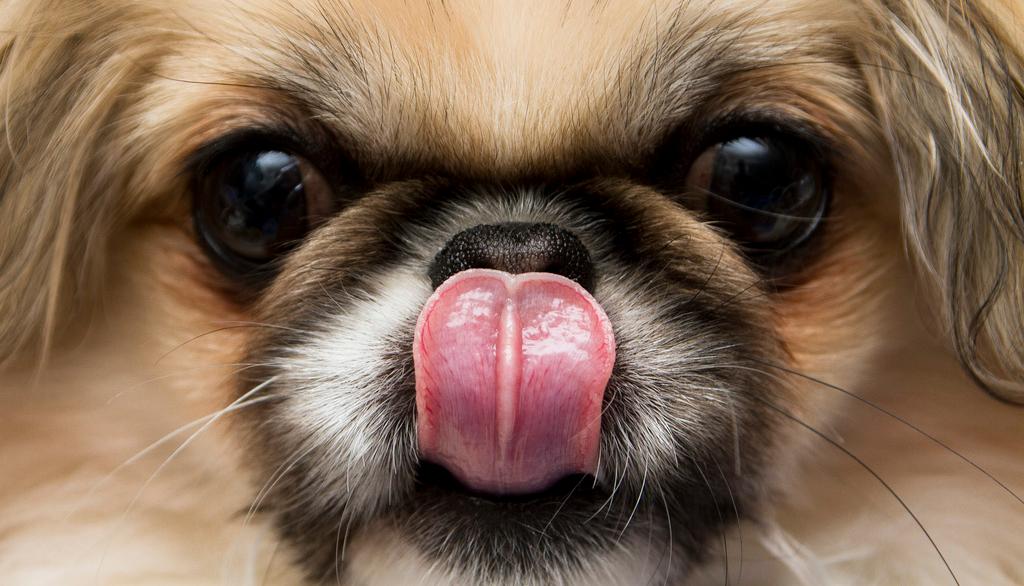

Auribus
Summus erectus, cor informibus aures Pekingese demissae per caput et ad lineam maxillae inferioris perveniunt. Capillus ornamentorum in spica vestis est longa et mollis.
Neck
Pekinese dogs have massive, short necks, which is especially noticeable when examining a pet in profile.
Frame
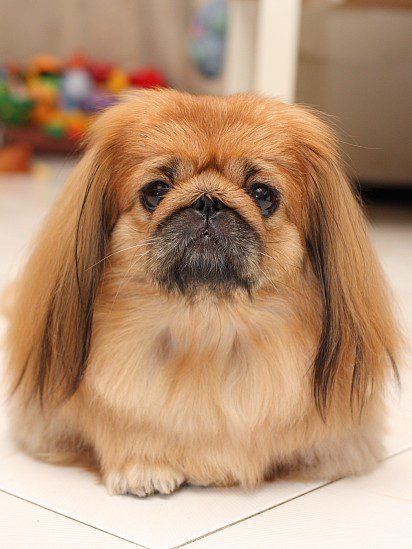

The body of the Pekingese is short, with a noticeably weighted front, a well-drawn waist and an almost straight back.
artus
The front legs are short, thick and bony with shoulders looking back and elbows pressed to the sides. The hind limbs are set close to each other and are lighter in bone. The angulations of the hind legs are normal, the hocks are relatively firm. The paws of the Pekingese are large, flat, without the roundness characteristic of most breeds. The front paws are slightly turned outward, while the hind legs look straight ahead. The Pekingese moves slowly, importantly, as if rolling.
cauda
Cauda canis in altum erecta, et ad extremum tenui flexura, permittit femur dextrum vel sinistrum remittere.
lana
Stylish “fur coats” of the Pekingese are formed by a layer of delicate undercoat and long, coarse outer hair. The dog’s neck is wrapped in a voluminous wool collar. On the ears, tail, toes and back of the legs, there is adorning hair.
Color
Secundum mensuram Pekingese aliquem tunicam colorem habere potest. Exceptiones canes albini sunt et iecoris singuli.
inhabilitantes vitia
- Cryptorchidismus.
- AUCTARIUM (magis quam 5.5 kg).
- Liver coat/albinism.
- Depigmented lips, eyelids and nose.
Photo of Pekingese
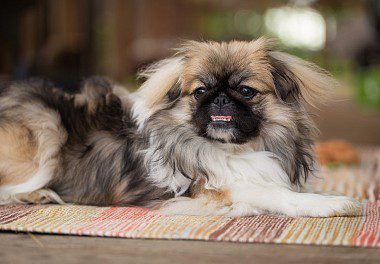

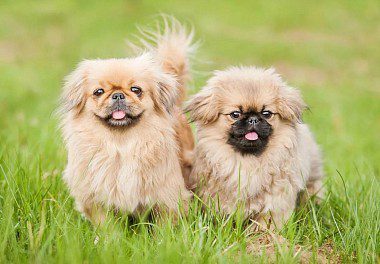

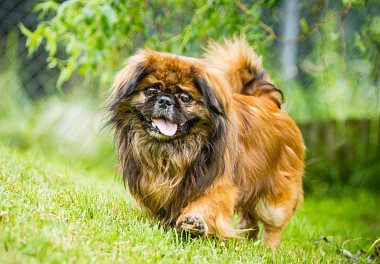

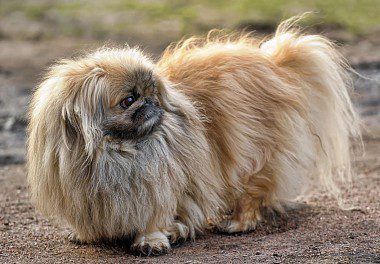

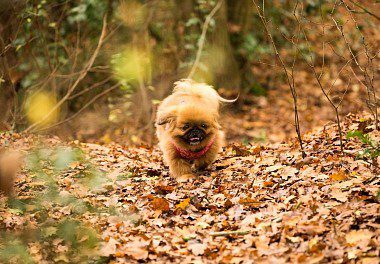

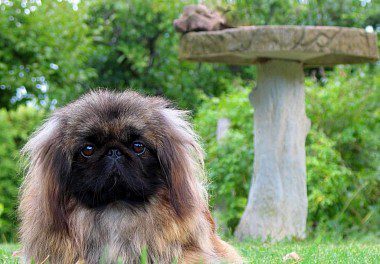

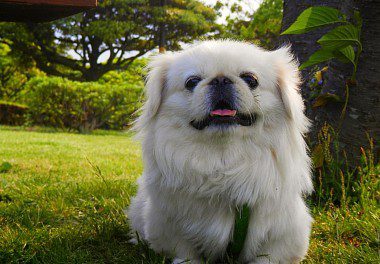

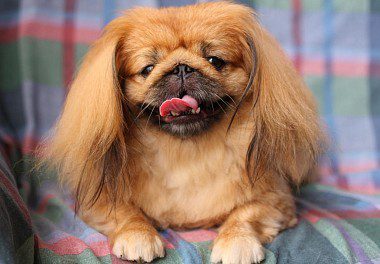

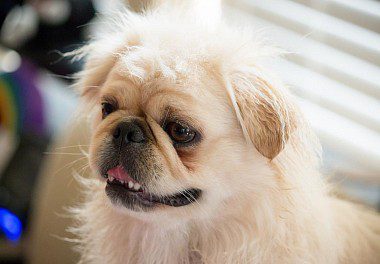

De natura Pekingese
The Pekingese is an arrogant fluffy nobleman who hates noise and fuss and sincerely enjoys a positive, peaceful environment and orderliness, which is why he is often recommended as a four-legged friend for older couples. In a good mood, a dog is indulgent towards caresses and tasty gifts falling at its feet, but it’s impossible to “buy” this wayward Asian sly just like that. The Pekingese are firmly convinced that the planet revolves exclusively around themselves, so they expect an appropriate attitude from the owner.
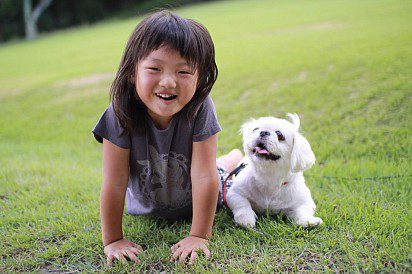

Conscientiam canem provocare conatur, eam premens, eam cum clamore movens frustra est. Legati hoc modo audiunt id quod volunt audire. Tametsi, si rudem in Pekingese relatum est, leo in eis evigilat, suamque utilitatem ad victoriam sustinens. Et tamen, Pekingesi guys sunt satis sociabiles, libenter otium suum cum domino communicantes. Eodem tempore valde independentes sunt et, ut decet, regium, ab hominum attentione non pendent. Canes Fu solum per duas horas opus relinquere? Non forsit! CRINITUS nobilis non solum apud se perforabit, et in te absente in tuo lecto "Montem comprehendet" libenter.
Cum domino Pekingese, inde a primis diebus, arctam permotionem constituunt, quem per vitam tenent (dummodo Pekingese ius sit, non hystericum praesidium gregis commercialis). Hoc iuvat animalia ut mutationes in mente domini et recte communicationis dosi sentiant acute. Si CRINITUS nimia obsessione laborat et ad genua domus non venit, tibi gratulor potes - mestizo habitu perfecti dominus factus es. Pekingese nimiam distantiam et frigiditatem aristocraticam possunt ostendere, sed prorsus molesta non est eorum proprium.
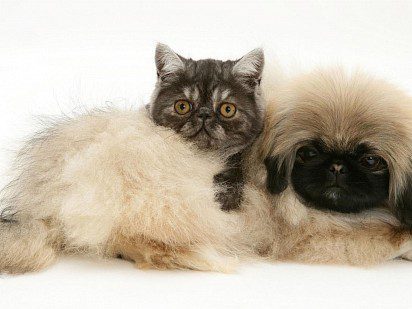

Pekingese non invidet et convenit diuturno tuo amore in felibus, avibus aliisque oblectamentis perferre. Eodem tempore, Napoleon complexum habet pronuntiatum, quod animal prohibet cum aliis canibus necessitudines normales aedificare. Defectus incrementi invictae aggressionis compensatur quod Pekingese erga maiores suos fratres experiuntur, ne expectes quod incantator Sinensium per lineam incederet, caudam suam movens: ut lupum placide ambulans procul in pugnam provocaret. ob hoc simi- simum Asiaticum, honoris causa.
Due to the fact that the Pekingese is sensitive to pain and not very patient, he is unlikely to become a friend to children. The dog is indifferent to games and noisy companies, and the need to obey someone simply infuriates her. In addition, the fragile constitution leaves the animal no chance of salvation if one of your heirs inadvertently steps on it or hugs it too tightly.
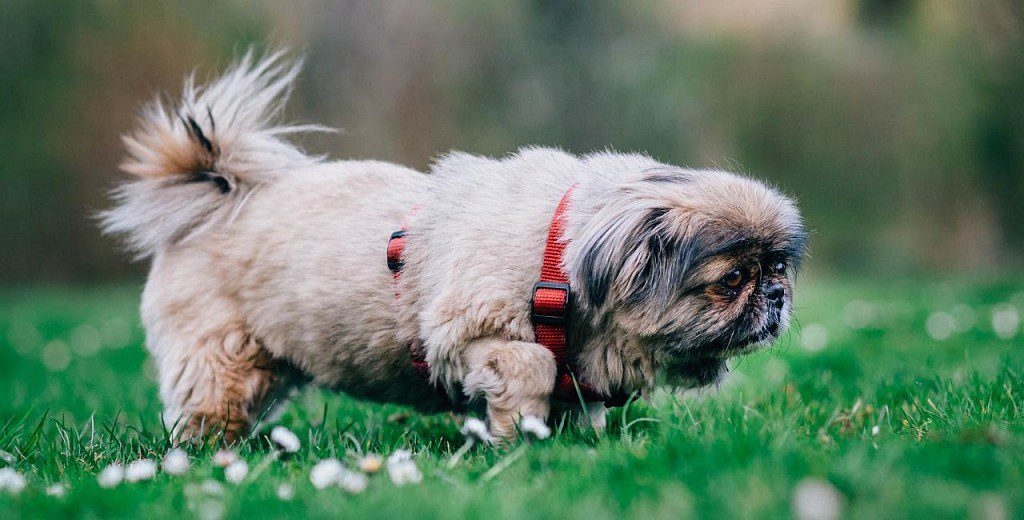

Institutio et educatio
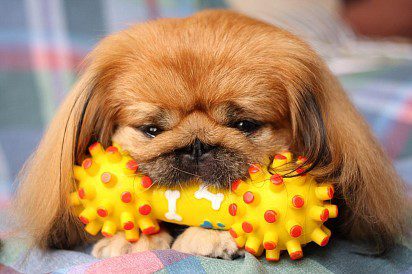

The difficult-to-educate, untrainable Pekingese is perhaps the most common cliché among fans of the breed. Yes, the “palace dogs” are self-willed and selfish, but it is quite possible to instill in them the norms of etiquette. The only thing is to change the tactics of behavior. In particular, harshness and pressure will not work with Pekingese, so get out of the habit of yelling at a pet that refuses to obey the command. But the breed is responsive to outright flattery, so praise the four-legged student even for the slightest success: it’s not difficult for you, but for the dog it’s an incentive.
Sine perseverantia et perseverantia in disciplina Pekingese facere non potes. Accipe canem ad exercendum, sed blandis persuasionibus magis quam directis mandatis utere. Delicium omnibus modis postulationem tuam implere debet: statim, decem minuta vel media hora, sed debet. Fere indulgentia erga Pekingese mores clare perspicitur. Canis unum et solum dominum sincere adorare potest, sed hoc non impedit quominus ad finem suum illum utatur. Si nullum animal festinat ad ludibrium quod ieceris arcessere, ne cogitas quidem te ipsum efficere, aliter non animadvertes quomodo te in officio pueri cum deliciis inveneris.
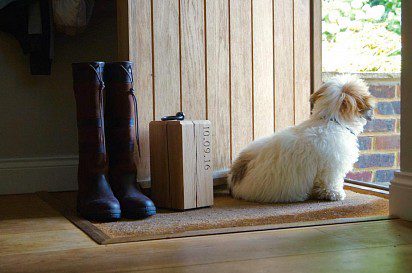

Of particular danger is adolescence, which in Pekingese puppies begins as early as 5 months of age. During this period of “breaking” the character of the Pekingese becomes frankly uncontrollable, does not want to learn anything and systematically tests the patience of the owner. This does not mean that the pet should be left alone and wait until he matures. On the contrary, forcing a teenager to train should be redoubled. If the puppy realizes that the owner is happy to put his pranks on the brakes, having matured, he is unlikely to treat him more respectfully. Of course, the Pekingese will not dare to encroach on the “throne” of the head of the family, but from time to time he will not give a damn about the requirements of the household.
As for training methods, there are no special programs focused on Pekingese. In fact, they are not needed, since standard training methods on representatives of this breed also work well. The only “but”: big-eyed pussies do not really respect teams. But on the other hand, most of the tricks from the same OKD will never come in handy for the Pekingese. So leave the drill and blind obedience to shepherd dogs, concentrating on raising endurance in the ward. In particular, from the first months of life, wean the dog to pick up sweets accidentally left by someone from the ground, help the animal get used to the idea that walking on a leash is not a punishment, but a pleasant pastime. In general, explain the rules and phenomena new to the Pekingese in such a way that their importance and necessity become clear to him.
Cura et sustentationem
Quamvis ambitiosa praeterita, in vita communi, Pekingese non sunt ita corruptae personae, nec plus indigent consolationis attributis quam quaelibet alia nobilitas decorativa. Nam ut lectus sit amet felis fermentum luctus. Sat est vulgare stragulum, in angulo positum, ubi potiones non flant. Ubi Pekingese non convenit, prope est adjumenta calefactionis, prope quae tam facile est pro brevibus "Chinese" crinitis tunicis ut supraheat induti. Viam facere, noli tentare culcitam infantem in locum surdum maxime in conclavi trudere. Ad normalem progressionem catulus debet cum domino contingere, vel saltem subinde e lecto illum intueri. Canum precationum pertinentium, Pekingese duabus phialis (potius chalybe immaculato), lorum cum collare, diapers et capsula lectica hauriuntur. Ludis animalibus opus est, sed canem tuum his non obrue. Duo tweeterorum satis sunt et optabile est ut hae pilae non sint quas Pekingese, ob machinis structuris notas, capere non possunt.
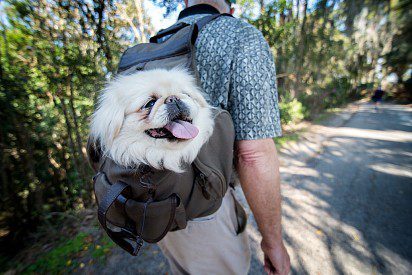

You won’t have to spend hours cutting circles in parks and squares with representatives of this breed: in terms of physical activity, the Pekingese is far from an energizer, and the structural features of the skull do not allow him to strain too much without harming his health. Usually, in order to walk freely, a Pekingese needs two visits a day for 15-20 minutes, but it all depends on the well-being and health of a particular dog. There are individuals, and there are many of them, who manage to warm up in 5-10 minutes. In addition, the breed does not tolerate heat well, so if the thermometer outside the window is +25 ° C and above, it is better to reschedule the tour for early morning or late evening. Chilly weather and severe frosts are also not a joy for the Pekingese, so on especially cold days you should completely refuse to walk.
Separatim memorabile est de disciplina canis ad secretum. Saepe Pekingesi hanc scientiam negligunt, malentes suas "sordida facta" facere in solo, tapetibus vel sella dominii. Praeterea quaedam animalia fodinae loca inopinatissima etiam postquam lance plene superaverunt. Dupliciter autem agitur de hoc conversatione;
- remove illa quae canes attrahunt, si tapete vel stragula;
- forbid the Pekingese to go to that part of the apartment, which he made his own toilet, blocking the entrance with a low fence.
As an alternative to rolling rugs and installing plastic fences, you can use special sprays that have a strong smell that is unpleasant for dogs. They do not scare away all individuals, but they work on some fluffy hooligans.
Important: you can not punish the Pekingese for going to the toilet past the tray, poking the dog with his nose into the products of his life. Otherwise, do not be surprised by the pet’s sophisticated revenge in the form of “fragrant gifts” in the most unexpected places.
Sanitatis
Catuli Pekingesi peculiarem speciem habent loricae, molliores et fluffier, unde infantes unus et semis mensis cum ocellosis massas lanuginosas viderint. Mutatio filiorum "tunica pilorum" adultorum "tunica" circiter 4 mensium evenit, sed in quibusdam personis processum usque ad 32 hebdomades vitae moratur. Per hoc tempus, Pekingese satis cotidie cum penicillo pensili pectebat et "panties" aream et aures rara pectine tractabat. Tunica prius quam pectendi conditioner madefacta est, ut Pekingese pilus iam fragilis est. Eodem tempore, motus pectinis quam diligentissime debetis esse: capillos non trahere et nullo casu extrahere. Pekingese tunica subtilissima est et lente crescit, si uterque pectens tanta damna affert, catulus duobus mensibus in ridiculam calvitium convertet.
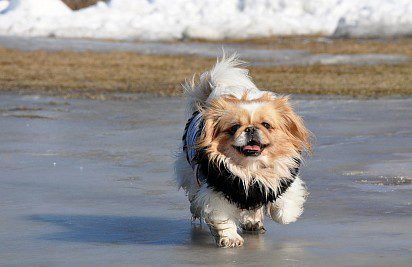

Ideally, the Pekingese is not cut or trimmed, combing and sorting out the tangles, but in some situations the rules are still violated. In particular, if the dog will never be shown in the ring and suffers greatly from the heat, his “mantle” can be slightly shortened. At the same time, it is important to understand that a haircut is a direct damage to the animal’s exterior, and it cannot be justified by one’s own laziness and lack of free time.
The ideal outwardly Pekingese is a fluffy creature with spectacular fringes on the ears, often dragging along the floor after its owner. All this beauty is 90% the result of human efforts. Firstly, because the animal will have to be taught to grooming, since not a single dog, and especially the pampered Pekingese, is delighted with the sensations that accompany the unraveling of matted hair. Secondly, because you will have to keep the coat clean and airy all year round.
Natantes non commendatur Pekingese in principio, ut semel in anno vel in vigilia spectaculorum disponant. Etiamsi pupillus tuus tam nocumentum cibi quam veneficii habeat, et incultus area sub cauda spectare coepit, canem in balineo ponere non est necesse. Simpliciter eluo maculatam aream sub aqua calida fluenti et pat arida linteo. In genere, in curando Pekingese, periti admonent utentes shampoos pulveris siccos, quia aqua et norma capillorum curarum medicatorum spoliant structuram capillorum canis, eius effusionem provocantes. Domini, qui deliciolum suum in quavis tempestate ambulare consueverunt, commendari possunt altiores IMPERVIUS mercandi in quibus tunica Pekingese a sordibus et spargit fideliter custodietur. Domi cincinnati crines a pollutione, fragilitate et implexis defendent.
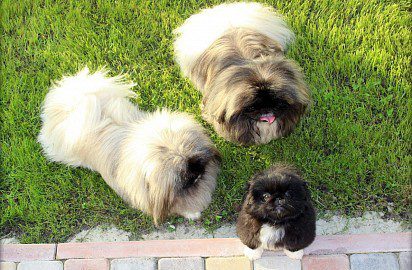

Keep your dog’s ears, eyes, and nasal folds clean. Unroll the coat a couple of times a week and look into the Pekingese’s ear funnel. If no pollution is observed inside and the ear does not stink with a sharp “ambre”, no intervention is required. The maximum that you can afford is to remove excess sulfur with a damp cotton pad. If the Pekingese began to shake his head, and an unpleasant smell floats from his ears, you will have to treat the animal at the veterinarian.
Locus generosissimi maxime est oculorum. Saepe, propter iniurias et disputationes cum aliis canibus calefactis, Pekingese oculi eveniunt. Si ergo nimium cimex luscus quaesisti, cave cave: da solitum demulcere animal in caput, et noli in ambulationibus lorum trahere ad sobrium canem somniantem. Praeterea notiones anatomicae pecoris plures obligationes domino suo imponunt. Exempli gratia, Pekingese saepius membranam mucosam palpebrarum abstergere debebit quam alii canes decorativi, quia plus strages et pulvis in ea accipit. Solutio phyto-lotions vel acidi borici ad hoc apti sunt. Oculos tuos lavare cum foliis tea, malum est, quia nimis stagnans infusio ex rudis quali- tate facta materiae inflammationis processum tantum augebit. Et recordabor
Another place that requires constant care and close attention is the crease on the dog’s muzzle. Air does not get into this impromptu wrinkle, but the lacrimal fluid in it accumulates in decent volumes, creating a greenhouse effect. Tighten the skin on the nose several times a week by wiping the crease with a dry, highly absorbent cloth. Pekingese claws are better to cut off a little, as they grow, since if the haircut is too radical, there is a risk of touching a blood vessel. It is worth taking care of the pet’s paws, especially if the dog often walks, so buy or sew waterproof slippers for the Pekingese for going out. And of course, do not neglect protective creams and vegetable oils. If you systematically rub care cosmetics into the dog’s paws, the appearance of cracks can really be avoided.
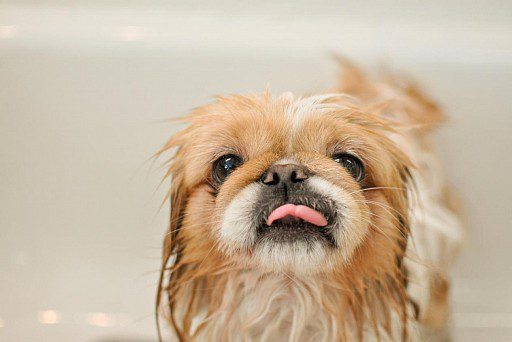

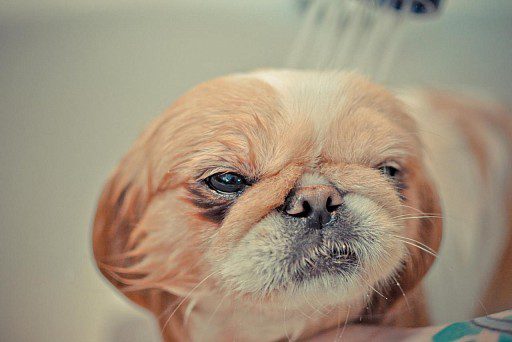

Insecta
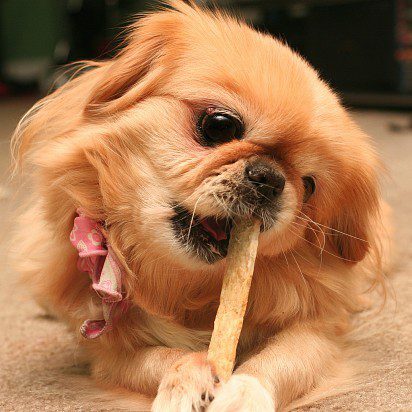

Productum principale in victu Pekingese est caro macer, inclusa Turcia et pullus. Ossa quippe quaevis infirmis dentibus nascendo contraindicantur, interdum canis cartilago molliri potest. Egregium et sanum in Pekingese catino crudum / o omma cocta cum antea pinguis membrana abscisa est, quae cum fimo misceri potest et debet. Pisces dies bis in hebdomada canibus disponuntur (tantum cod piscibus infulis), et semel per VII dies in deliciis permittitur ut ovum vitellum durum coctum tractare, totum vel dimidium, secundum canis aetatem.
Frugum autem utile est et catulos et adultos alere. In primo casu, oatmeal (sacculum), milium dimidii cum hiatu et grossi oryzae contritae idoneae sunt. In secundo - oryza, rarius buckwheat. Quaelibet legumina, iurulenta vel cruda, etiam utiles sunt, ut fructus (exceptiones sunt fraga, kiwi, pineapple). Multum interest in Pekingese amorem lactis humilem pinguem acidum immittere, quod saepe in catulis abest. Melius est cognoscere fructus acidi lactici fermentum cum casae casei combusti domi facta. Vitamina et supplementa mineralia in victu Pekingese, "sedentes" in tabula naturali, necessaria esse debent. Melius tamen est si artifex eas carpit, quia cum temere alimenta supplementa emendis, difficile hypervitaminosis animali periculum est.
Ad informationem tuam: vita et sanitas mediocris Pekingese non sinit eum magnas subsidia industriae depopulari, quamvis genus inopiae appetitus non patitur. Desideriis tuis quadrupedibus amici nimium ne indulgeas si vigilare non vis quomodo venustus CRINITUS transformat in pinguem, anhelantem et semper aegrum massam.
Health and disease of the Pekingese
De aegritudinibus haereditariis in Pekingese, urethritis, morbis valvularum cordis, obsessio discorum intervertebralium, tumor glandulae perianae et morbi oculi (ectropion, ulceris cornei, cataractae) saepissime sentiunt.
Quam eligere catulum
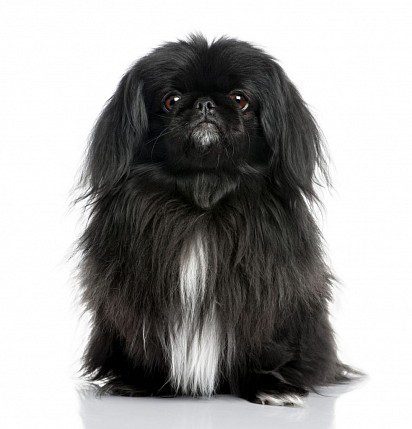

- Mares et feminae pekingae fere in genere complexionis non differunt, sed aspectus "pueri" magis spectabilis est, quia minus intensive ("puellae" etiam a partu et estro comam effundunt.
- Noli catulum a primo pastore quem vides. Melius est varias lecticas e diversis catulis aestimare.
- When purchasing a puppy for exhibitions, remember: the exterior potential of the Pekingese is visible by 6-8 months. If you brought a two-month-old baby into the house, the chances that a future champion will grow out of him are about 50/50.
- Examine the puppy’s parents, paying special attention to the eyes. In excessively goggle-eyed producers, the offspring inherit this feature, which is fraught with further loss of eyeballs in babies.
- Si catuli tunica matrum maxime nitida non est, hoc fieri potest ex moling postpartum. In hoc casu, roga molestie cubile pro photographica canis ante coitum.
- Before buying, check if the Pekingese are dewormed and what vaccinations they have received. The appearance of the children is also important. Crumbs with wet eyes, hernias and dirty “patch” under the tail – this is not the most profitable acquisition.
- Catulos in notis Reprehendo. Solet titulus in ventre vel aure collocari.
- When buying in absentia “by photo”, discuss with the seller the possibility of returning the puppy. Photoshop works real miracles, so it is sometimes almost impossible to see a glamor model in a real Pekingese, whose image flaunted on the kennel website.
Photo of Pekingese catulos
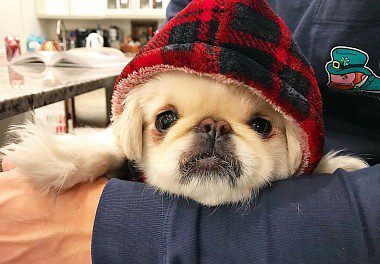

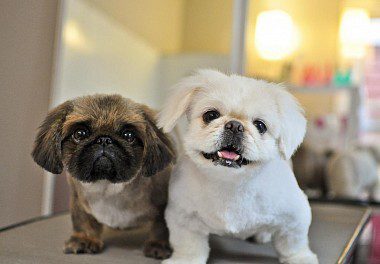

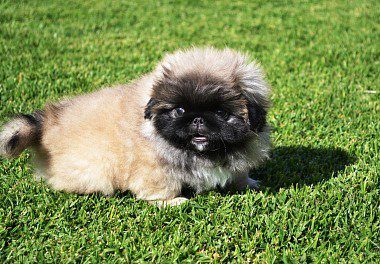

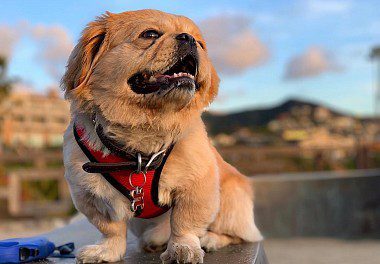

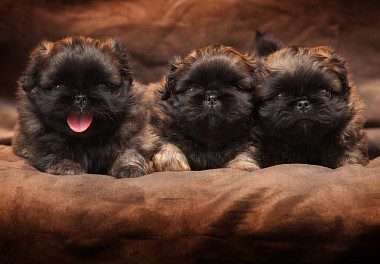

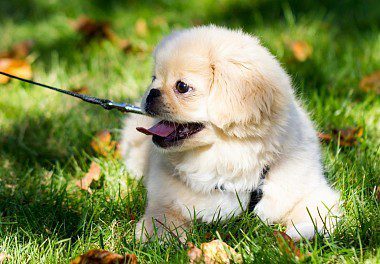

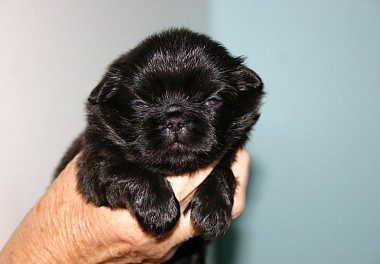

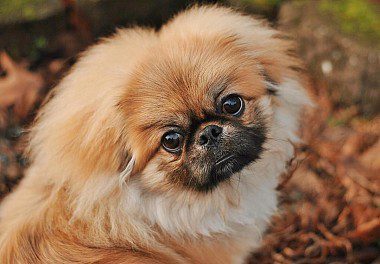

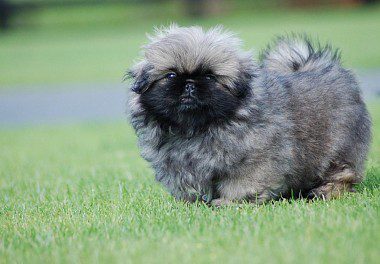

Pekingese price
The average cost of a Pekingese puppy in Russian kennels is 300 – 500$, but sometimes advertisements for the urgent sale of a litter pop up on the Internet, then the price tag can fall to 250$ or less. However, if you need a purebred Pekingese of a breed or show class, it is better to bypass all kinds of “promotions”, since a plembrace is usually sold in this way.





